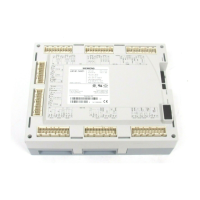2/28
Building Technologies Division CC1N7785en
20.11.2017
Use
Burner controls type LOK16.../LGK16... feature a self-checking flame supervision
circuit.
The flame supervision circuit initiates the safety actions in the case of... :
• ... premature or missing flame signal
• ... any kind of fault on the flame detector, the detector cables or the flame signal
amplifier that could simulate a flame signal during burner operation
The burner controls are therefore suited for use in all types of oil- or gas-fired
combustion plant where self-checking flame supervision systems are either mandatory
or recommended.
For example:
- Burners that operate continuously
- Burners in intermittent operation that, in the case of great heat demand, may
operate continuously for more than 14 hours, e.g. in plant using boiler sequencing
- Burners that need to comply with the German TRD 411 and TRD 412 regulations
for steam boilers
- Burners in plant where, for specific safety requirements, supervision of the burner
by a self-checking flame supervision system seems advisable
- The control sequence and connection circuitry of the LOK16…/LGK16… burner
controls are identical to those of the LAL2... and LFL1... respectively (with the
exception of the LFL1.148), so that existing combustion plant can also be equipped
with self-checking burner controls,
provided very good flame detector current values are measured in the plant
supervised so far by the LFL1..., and
provided the following types of flame detectors are either installed or can
subsequently be fitted:
- Photocell detector RAR9
- Flame detector QRA53.../QRA55...
- Ionization probe
- Flame detector QRA53.../QRA55... together with ionization probe, e.g. in the case
of burners using a pilot burner (also see Data Sheet N7712)
Flame supervision
when using LOK16...
Flame supervision
when using LGK16...

